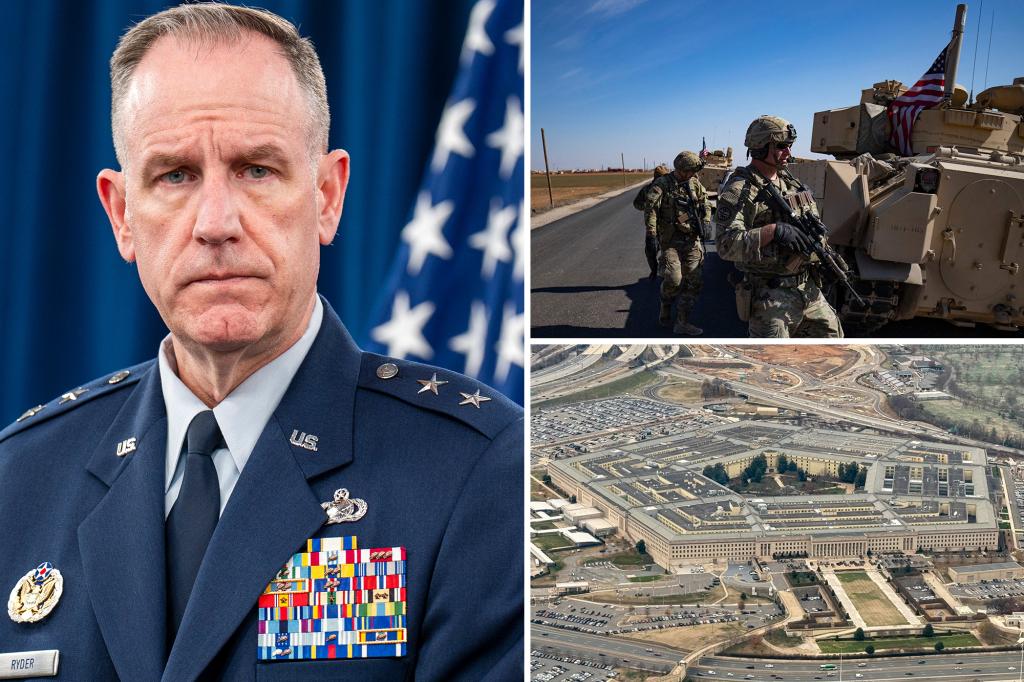The US Department of Defense, in a surprising revelation, admitted to a significant misrepresentation of the number of American troops stationed in Syria. Pentagon spokesperson, Major General Patrick Ryder, publicly acknowledged that the actual troop presence was over double the officially reported figure of 900, standing at approximately 2,000. This discrepancy, attributed to a previously undisclosed contingent of “temporary rotational forces,” raises questions about transparency and the evolving nature of the US mission in Syria, particularly in light of the recent overthrow of President Bashar al-Assad. While the Pentagon maintains that these additional troops are deployed for shorter durations, typically between 30 and 90 days, the timing and specific nature of their deployment remain shrouded in ambiguity, with Ryder stating only that it had been in effect “for a while,” predating the fall of the Assad regime by at least several months.
The revised troop count paints a more complex picture of the US military involvement in Syria. The initial figure of 900 troops was generally understood to represent the long-term deployment focused on counter-ISIS operations. The additional 1,100 troops, categorized as temporary, seemingly indicate a broader and potentially more dynamic mission set. While the Pentagon insists that these temporary forces are primarily dedicated to the ongoing fight against ISIS, their presence raises questions about the extent to which the US is engaged in other activities, particularly given the volatile political landscape following Assad’s ousting. The lack of detailed information regarding the specific tasks and operational parameters of these temporary forces adds to the uncertainty surrounding their role and contributes to the perception of a lack of transparency.
The Pentagon’s explanation for the discrepancy centers on the distinction between long-term deployments and these shorter, rotational deployments. The 900 troops initially reported represent the core, enduring presence focused on the enduring mission against ISIS, while the additional forces are characterized as responsive to fluctuating operational needs. This distinction, however, does not fully address the significant numerical difference or the extended period over which these “temporary” forces have been present. The ambiguity surrounding the duration and purpose of these deployments fuels speculation about a potential expansion of the US role in Syria beyond counterterrorism, especially in the context of the recent regime change. The fact that the presence of these additional troops was not previously disclosed underscores the need for greater clarity and transparency regarding US military operations abroad.
The revelation of the increased troop presence comes at a critical juncture in Syria’s political trajectory. With Assad’s departure and the subsequent power vacuum, the country is facing unprecedented uncertainty. The increased US military footprint, while officially tied to the fight against ISIS, could be interpreted as a strategic move to influence the unfolding political dynamics in the region. The timing of the disclosure, coinciding with Assad’s exile in Russia, further fuels speculation about the US’s intentions in post-Assad Syria. While the Pentagon maintains that the additional troops are not part of a larger strategic shift, the lack of detailed information leaves room for interpretation and underscores the need for a more comprehensive explanation of the evolving US role in the region.
Major General Ryder’s acknowledgment of the misreported troop numbers raises concerns about the accuracy and transparency of information provided by the Department of Defense. While Ryder attributed the discrepancy to an internal communication issue and took personal responsibility for correcting the record, it highlights the potential for discrepancies between official reports and the reality on the ground. The fact that the actual troop presence was more than double the officially reported figure raises questions about the reliability of other publicly available information regarding US military deployments. This incident emphasizes the importance of accurate and timely reporting to maintain public trust and ensure accountability in military operations. It also necessitates a review of internal reporting mechanisms within the Pentagon to prevent similar discrepancies from occurring in the future.
The situation in Syria remains fluid and complex. The presence of a larger than previously acknowledged US military contingent introduces a new dimension to the already intricate dynamics at play. While the stated purpose of these troops is to combat ISIS, their presence inevitably raises questions about the broader US strategy in the region, particularly in the context of the post-Assad era. The lack of clarity surrounding the specific tasks and operational parameters of these additional forces underscores the need for greater transparency from the Pentagon. A comprehensive explanation of the evolving US role in Syria is crucial not only for maintaining public trust but also for fostering a more informed understanding of the complexities of the situation and the potential implications for regional stability. Moving forward, clear and consistent communication from the Department of Defense will be essential to address the legitimate concerns raised by this discrepancy and to build confidence in the accuracy and transparency of information regarding US military deployments.

